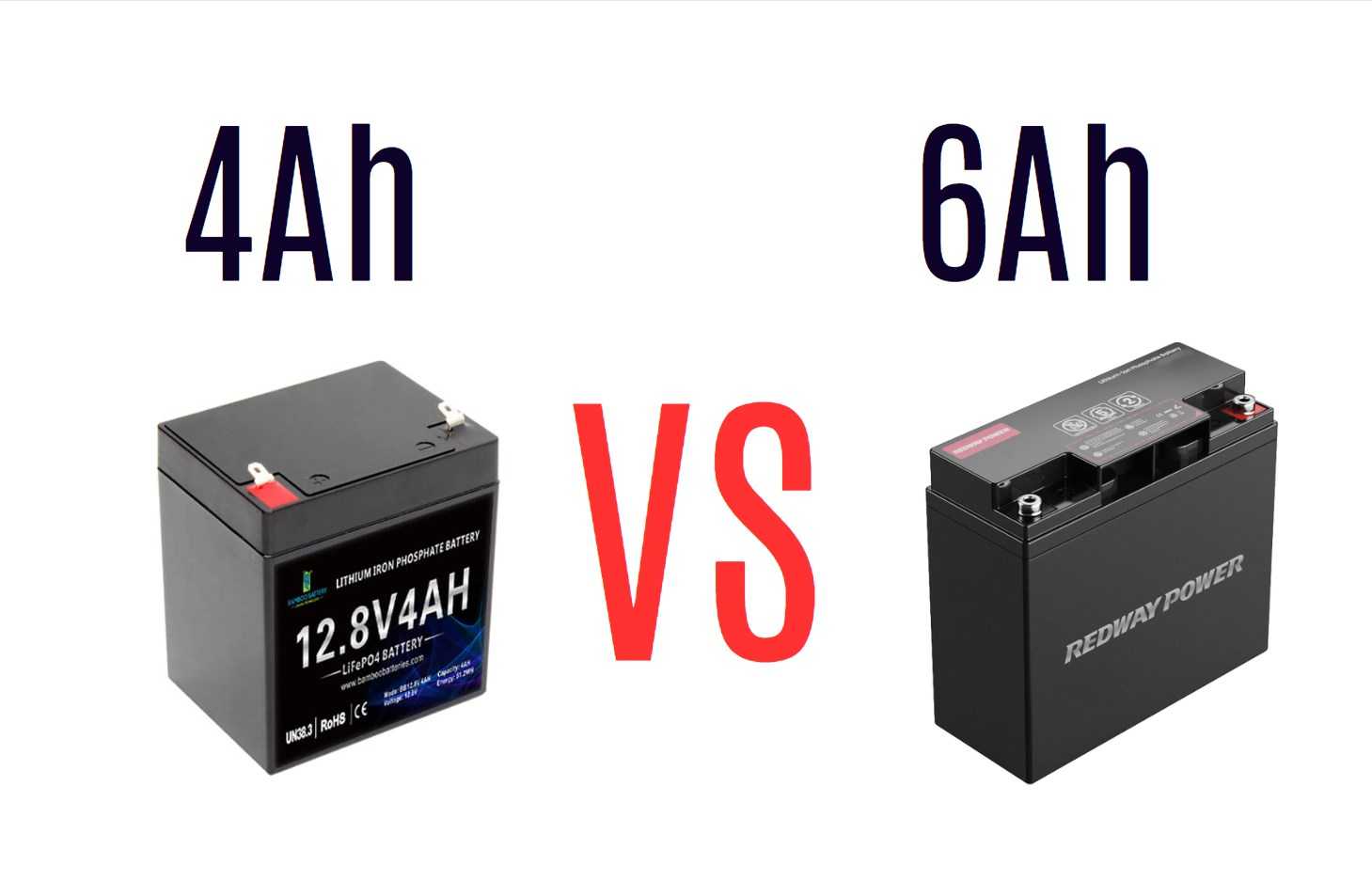When choosing between a 4Ah and a 6Ah battery, understanding the differences in capacity, runtime, and application is essential. This guide will explore the key features of each battery type, helping you make an informed decision based on your specific needs.
Battery Capacity Explained
Amp-hour (Ah) is a unit that measures battery capacity. It indicates how much current a battery can deliver over a specific period.
- A 4Ah battery can supply 4 amps for one hour or 1 amp for four hours.
- A 6Ah battery, on the other hand, can provide 6 amps for one hour or 1 amp for six hours.
This means that the 6Ah battery has a 50% higher capacity than the 4Ah battery, allowing it to store more energy and provide longer runtimes under similar conditions.
Runtime Comparison
The runtime of a battery depends on its capacity and the power requirements of the device being powered. Here’s a simple comparison:
| Battery | Capacity (Ah) | Runtime at 1A | Runtime at 2A |
|---|---|---|---|
| 4Ah | 4 | 4 hours | 2 hours |
| 6Ah | 6 | 6 hours | 3 hours |
As illustrated, the 6Ah battery provides longer usage times, making it suitable for applications requiring extended power supply.
Advantages of Each Battery Type
Benefits of a 4Ah Battery
- Portability: The smaller size and lighter weight make it easier to handle and transport.
- Cost-Effective: Generally more affordable than higher-capacity batteries, making them ideal for budget-conscious users.
- Sufficient for Light Use: Ideal for devices with lower power requirements or for occasional use.
Benefits of a 6Ah Battery
- Extended Runtime: Perfect for high-drain devices or applications requiring continuous operation.
- Increased Power Delivery: Can handle more demanding tasks without performance drops.
- Versatility: Suitable for power tools, electric vehicles, and other applications where extended use is necessary.
Charging Considerations
Charging times also vary between the two types:
- A typical charger may take about 2 to 3 hours to charge a 4Ah battery from empty.
- A 6Ah battery might take around 3 to 5 hours, depending on the charger’s specifications.
Applications and Suitability
Choosing between a 4Ah and a 6Ah battery often depends on your specific application:
- 4Ah Battery Use Cases:
- Light-duty power tools
- Occasional use devices
- Applications where weight and portability are prioritized
- 6Ah Battery Use Cases:
- Heavy-duty power tools
- Continuous use devices
- Situations where longer runtimes are critical
Latest News in Battery Technology
- Recent advancements in lithium-ion technology have led to batteries with higher capacities and faster charging capabilities.
- Manufacturers are focusing on producing more compact batteries without sacrificing performance, making them suitable for various applications.
- The market is seeing an increase in eco-friendly batteries that reduce environmental impact while maintaining efficiency.
Redway Expert Comment
In our experience at Redway Battery, understanding the differences between a 4Ah and a 6Ah battery is crucial for optimizing performance in your applications. While the higher capacity of a 6Ah battery provides longer runtimes, it’s essential to consider your specific needs regarding weight, portability, and cost. Assessing these factors will ensure you select the right battery for your requirements.” In conclusion, the choice between a 4Ah and a 6Ah battery ultimately hinges on your specific needs and usage patterns. While the 6Ah battery offers greater capacity and longer runtime, the lightweight and cost-effective nature of the 4Ah battery makes it suitable for lighter tasks. By evaluating your requirements carefully, you can make an informed decision that best suits your power needs.




